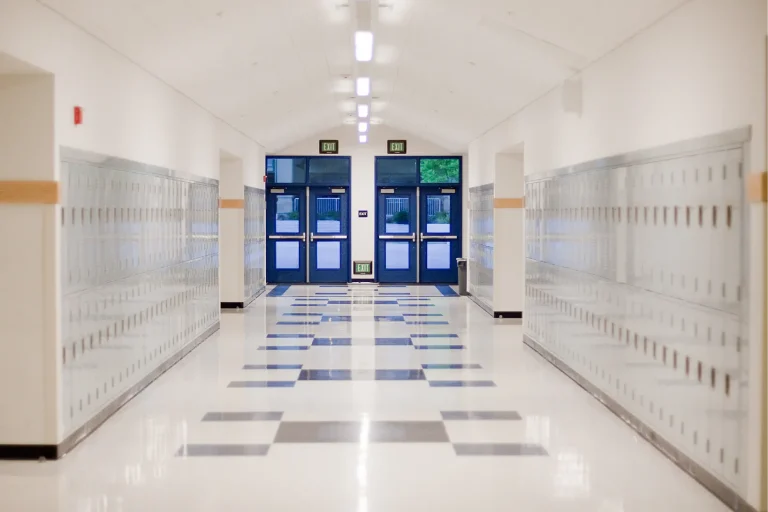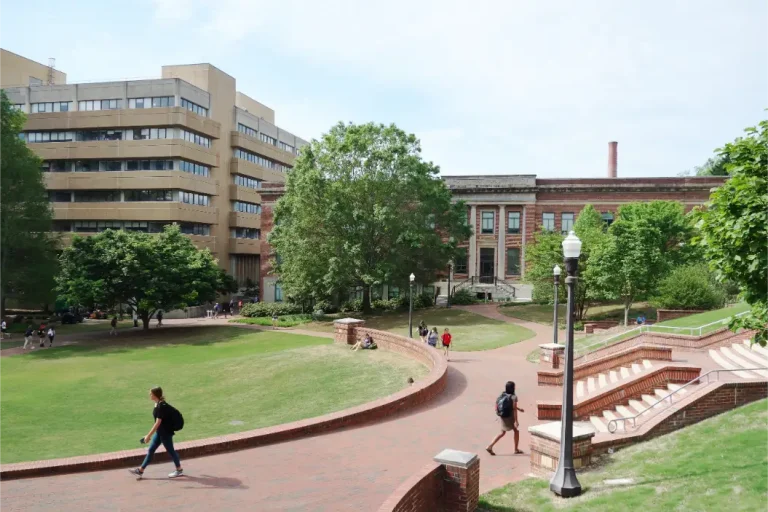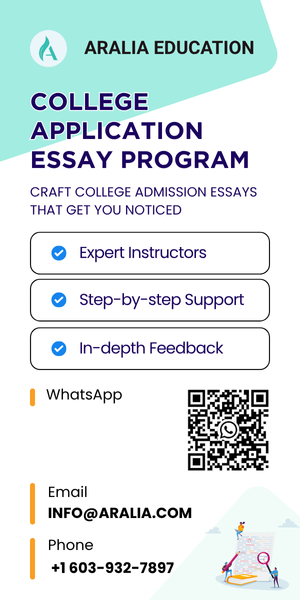Stand out in the college admission process
1. Understanding the U.S. News & World Report Ranking Methodology
The U.S. News & World Report law school rankings rely on a multifaceted methodology that evaluates placement success, academic reputation, selectivity, and institutional resources.
| Metric | Weight |
| Employment outcomes 10 months after graduation | 33% |
| Bar exam pass rate for first-time test-takers | 18% |
| Ultimate bar exam pass rate | 7% |
| Peer assessment score | 12.5% |
| Lawyers’ and judges’ assessment score | 12.5% |
| Median LSAT and GRE scores | 5% |
| Student-faculty ratio | 5% |
| Median undergraduate GPA | 4% |
| Library resources | 2% |
| Acceptance rate | 1% |
Here’s a breakdown of the major indicators used in the 2025 rankings:
Placement Success and Bar Exam Pass Rates (58%)
- Employment Outcomes (33%): This assesses students’ employment outcomes 10 months post-graduation, emphasizing full-time, long-term roles that require passing the bar or where a J.D. is a distinct advantage. School-funded fellowships and advanced degree programs also count.
- First-Time Bar Exam Pass Rate (18%): Schools are rated on how their graduates perform on the bar exam the first time across all jurisdictions. This helps mitigate state-specific bias and rewards schools whose graduates exceed statewide pass rates.
- Ultimate Bar Pass Rate (7%): Captures the percentage of graduates who pass the bar within two years, giving insight into a school’s long-term effectiveness in preparing students for legal practice.
Quality Assessment (25%)
- Peer Assessment (12.5%): Based on feedback from law school deans, faculty, and administrators, this metric gauges perceived academic quality on a 1-to-5 scale.
- Assessment by Lawyers and Judges (12.5%): Similarly rated, this measures the professional reputation of schools among members of the bar and bench, averaged across the past three survey years.
Selectivity (10%)
- Median LSAT/GRE Scores (5%): LSAT and GRE scores of the incoming class are converted to percentile scales, with weighting based on the proportion of test submissions.
- Median Undergraduate GPA (4%): Schools with higher entering class GPAs score better in this category.
- Acceptance Rate (1%): A lower acceptance rate reflects greater selectivity and positively impacts the ranking.
Faculty and Library Resources (7%)
- Student-Faculty Ratio (5%): A lower ratio suggests more access to faculty, enhancing student support and mentorship opportunities.
- Library Resources (2%): Evaluated through student-to-librarian ratios, this metric offers insights into academic support availability.
2. Biggest Changes in the 2025 Rankings
In legal education, the “T14” (Top 14) law schools represent a tier of elite institutions that typically dominate the rankings. While most names in the T14 remain constant, this year’s rankings brought notable changes:
Stanford Law School, Yale Law School, and the University of Chicago Law School maintained their leading positions, with Stanford and Yale tied for #1 and Chicago close behind at #3.
The University of Virginia held steady at #4, while the University of Pennsylvania Carey Law School dropped one spot, moving from #4 to #5.
Duke University and Harvard University are tied at #6—a surprising development as this marks Harvard’s lowest ranking ever in the history of U.S. News rankings, prompting widespread discussion in the legal community.
New York University and the University of Michigan each rose one spot to tie at #8.
Columbia University fell two spots to #10, sharing the rank with Northwestern University (Pritzker), which dropped one position.
A historic moment in the T14 came when the University of Texas at Austin, Vanderbilt University, and Washington University in St. Louis all entered the elite circle. According to Reuters, the University of Texas at Austin made it to the T14 several times before; however, this is the first time that both Vanderbilt and WashU have been ranked this high.
Several schools outside the T14 saw significant gains:
- University of North Carolina-Chapel Hill surged to #18 (tied with Cornell).
- Texas A&M University and the University of Georgia tied at #22, reflecting strong regional employment outcomes.
- The University of Florida and Florida State both ranked in the top 40, signaling growing strength in Southern legal markets.
3. Top 14 US Law Schools
Here are the top 14 law schools according to the 2025 U.S. News rankings (view here for the full rankings):
| 2025 US News Ranking | School | Acceptance Rate | State |
| 1 | Stanford University | 7.3% | Stanford, CA |
| 1 | Yale University | 5.6% | New Haven, CT |
| 3 | University of Chicago | 12.7% | Chicago, IL |
| 4 | University of Virginia | 13.9% | Charlottesville, VA |
| 5 | University of Pennsylvania | 9.9% | Philadelphia, PA |
| 6 | Duke University | 13.9% | Durham, NC |
| 6 | Harvard University | 10.1% | Cambridge, MA |
| 8 | New York University | 16.7% | New York, NY |
| 8 | University of Michigan-Ann Arbor | 12.9% | Ann Arbor, MI |
| 10 | Columbia University | 11.8% | New York, NY |
| 10 | Northwestern University (Pritzker) | 15.4% | Chicago, IL |
| 12 | University of California-Los Angeles | 16.1% | Los Angeles, CA |
| 13 | University of California, Berkeley | 17.3% | Berkeley, CA |
| 14 | Georgetown University | 20.1% | Washington, DC |
| 14 | University of Texas-Austin | 15.6% | Austin, TX |
| 14 | Vanderbilt University | 18.4% | Nashville, TN |
| 14 | Washington University in St. Louis | 19.9% | St. Louis, MO |
Unlock Your Writing Potential: Students in Our Writing Competition Preparation Class Are More Likely to Secure Awards
The 17 law schools currently ranked in this year’s Top 14 (T14) all provide a high-quality legal education, equipping future practitioners with the knowledge and experience needed for success. Within the T14, there’s a diverse mix of institutions: prestigious Ivy League schools like Yale, Harvard, UPenn, and Columbia, each with over a century of experience shaping legal minds; innovative leaders in legal education such as Stanford, the University of Chicago, and the University of Virginia; top-tier public institutions like UC Berkeley and UCLA; and rising academic leaders such as Duke and Northwestern. These schools have long served as cornerstones of the American legal system, with many U.S. Presidents and Supreme Court Justices counted among their alumni. Even recent entrants to the T14, like Vanderbilt University and Washington University in St. Louis, demonstrate impressive credentials, with first-time bar exam pass rates of approximately 97% and 94%, respectively, in 2023.
The 2025 rankings underscore the increasing importance of employment outcomes and bar exam pass rates in evaluating law schools. The rise of schools like the University of Texas at Austin, Vanderbilt University, and Washington University in St. Louis suggests that strong regional networks and bar support can rival the prestige of traditional Ivy League institutions. This year’s rankings evolved away from Ivy League and East Coast dominance, rewarding schools with tangible results for graduates regardless of historical reputation. Whether you’re a prospective law student, a legal professional, or simply a rankings enthusiast, this year’s list offers plenty to analyze and debate.
4. Law Schools With the Most Graduates at Big Law Firms
As part of the Best Law School Ranking 2025, U.S. News also released another ranking of Law Schools with the Most Graduates working at Big Law Firms.
When comparing this ranking to the list of the best law schools, it’s clear that the traditional T14 has shifted significantly. Northwestern University, ranked 10th among the best law schools, tops the list for the most graduates working at major law firms. In contrast, Yale University—widely known as one of the most prestigious law schools in the country—does not appear in the top 14 for big law employment due to its focus on clerkships, academia, and public interest law. While rankings of the best law schools offer insights into academic quality, the list of schools with the most graduates at top firms provides a valuable perspective on post-graduation outcomes.
With many top law schools, including Harvard and Yale, having withdrawn from the U.S. News rankings since 2022, it’s important for students to remember that rankings are only one factor in the decision-making process. Choosing the right law school involves considering a range of elements—such as how well the program aligns with your academic learning style, whether the school’s graduate outcomes match your career goals, and the level of support it offers for your path into legal practice. Students are strongly encouraged to conduct thorough research on each school before applying.
Moreover, with traditional giants like Harvard and Yale no longer dictating the terms of rankings, there is an expanded opportunity for students to find the best “fit” school, aligned with their career goals, financial needs, and academic ambitions.
5. Prepare for Your Future Dream Law School
For high school students who want to pursue law in higher education, you can start preparing by entering legal competitions to sharpen your knowledge and gain exposure to the field. Competitions like the Columbia Undergraduate Law Review High School Essay Contest or Harvard International Review Academic Writing Contest are great opportunities for you to start your legal research and nurture your passion for law.

CULR High School Essay Contest Preparation
The CULR High School Essay Contest Preparation class will navigate students through brainstorming, researching, outlining, drafting, and revising their essays. They will provide personalized feedback and suggestions to help students improve their writing and critical thinking skills.

HIR Academic Writing Contest Prep
In the HIR Academic Writing Contest Preparation, students will explore college-level topics in international affairs to craft a compelling, well-researched essay.









